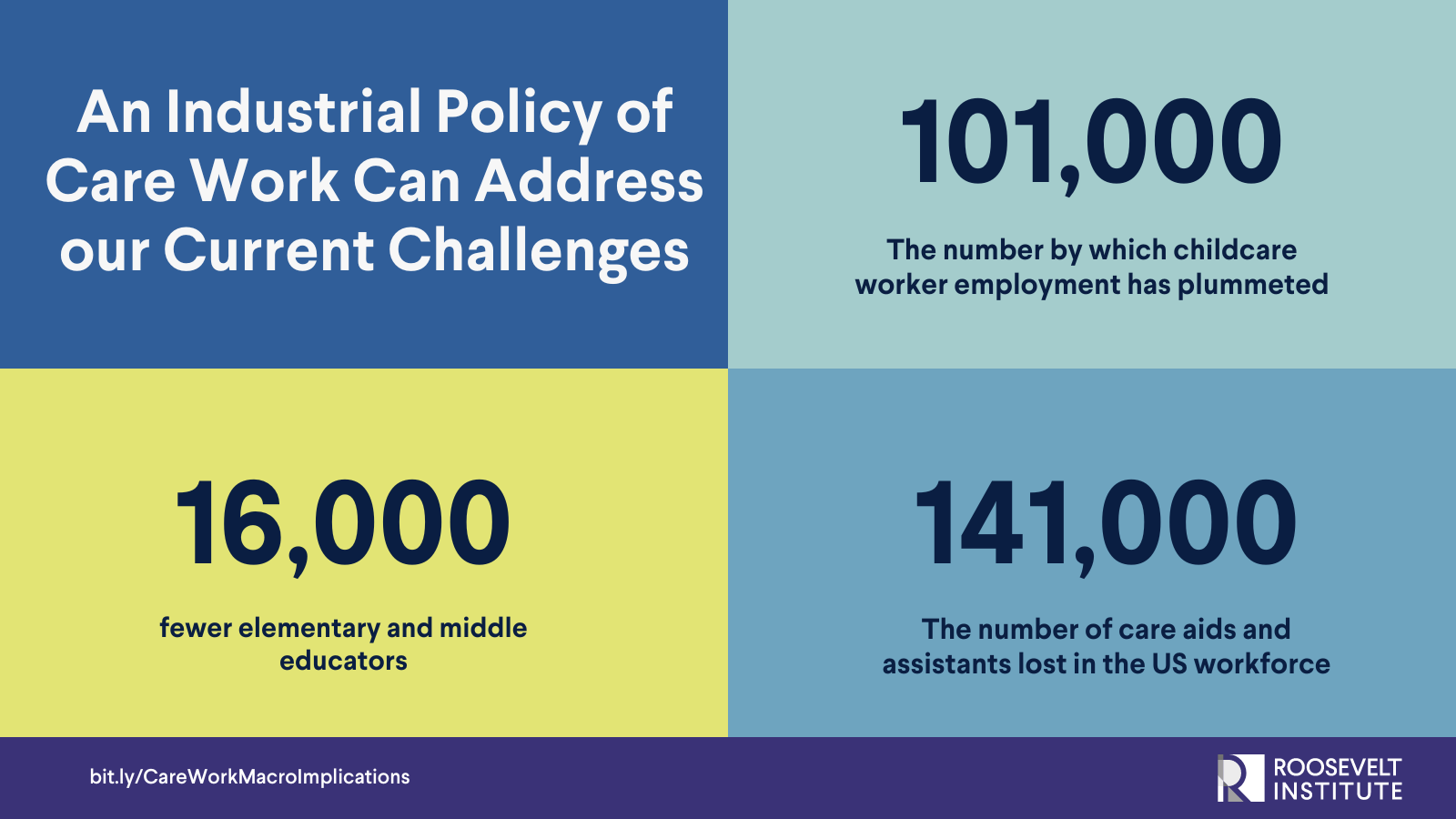The Macroeconomy Needs a Care Work Industrial Policy
August 17, 2023
By Alí R. Bustamante
The pandemic spotlighted the indispensable role care workers play in upholding the health, well-being, and economic equilibrium of individuals, families, and communities. Amid widespread care center closures, millions of Americans found themselves devoid of care worker support, leading to a marked decrease in labor force participation, especially among women.
Next month, Americans may once again experience a critical gap in care services if funding from the American Rescue Plan’s childcare stabilization fund is not renewed. One year after the Inflation Reduction Act’s and CHIPS and Science Act’s extraordinary investments in clean energy and semiconductors, it’s clear that industrial policies work and that the care sector is in dire need of investment.
Presently, more than 4.8 million Americans provide care work such as childcare, eldercare, and health and disability services. When we add teachers to this equation, the number balloons to 12.2 million workers—amounting to about 7.6 percent of the total workforce. This care workforce endured some of the harshest working conditions during the pandemic, deepening the legacy of systemic worker exploitation in the industry.
As a result, more than 230,000 workers have transitioned from care work since February 2020. Childcare worker employment has plummeted by 101,000, and care aides and assistants have seen a reduction of 141,000 since the pandemic started. Additionally, the number of elementary and middle school teachers has dwindled by 4.4 percent, resulting in approximately 16,000 fewer educators.
This decline in care work employment stems largely from a decline in new entrants to the field, as younger women have opted for other industries instead. Yet, policymakers have not undertaken successful initiatives to enhance working conditions for care workers or to modernize the sector to better align with the nation’s care needs. In the absence of adequate public investments, employment in the care work sector is expected to continue its decline.
This vacuum has far-reaching economic implications, affecting labor force participation, productivity, and prices—the foundations of economic growth (Lagarde and Ostry 2018). Data shows that while prime-age women’s participation increased, the decline in labor force participation among women over 54 has offset this positive trend—dragging down the overall labor force participation rate of women.
Additionally, the dearth of health-care support workers—nurses, psychiatric aides, occupational therapy assistants, home health aides—has overburdened existing staff, leading to burnout and high turnover. Consequently, patient care levels have suffered, culminating in adverse health outcomes. As an aging population grapples with a rise in pandemic-induced disabilities, the demand for care services is set to soar, driving up medical care expenses. The anticipated need for 2 million health-care occupation jobs by 2031 indicates an impending surge in medical care costs that could accelerate inflation.
The lack of investment in the care sector not only jeopardizes economic growth but also perpetuates a disregard for the significant contributions of care workers—contributions that have gone unnoticed for far too long. President Biden proposed investments in the care sector in 2021 as part of his Build Back Better legislative package, but those provisions were cut in negotiations with Congress over the Inflation Reduction Act.
As implementation of the IRA continues, care work still deserves to be one of the administration’s primary issues. In the absence of an industrial policy that bolsters care work, investments in various industries and the broader economy will be severely compromised, as will the economic security of care workers.
The Macroeconomic Implications of Care Work
Read the brief Opens in new window